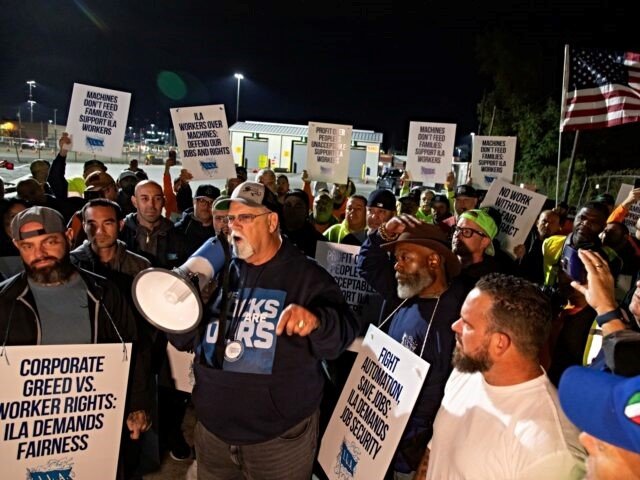Report by Kamgar Ekta Committee (KEC) correspondent

Nearly 50,000 dock workers, represented by the International Longshoremen’s Association (ILA), walked out of their jobs on 1 October 2024, affecting 36 major ports along the East and Gulf coasts of USA. They demanded a $5 per hour wage increase due to the grueling nature of their work and rising inflation. However, their fears went beyond this.
Automation and job security are their primary concern. With ports across the country pushing for more automation, workers feared losing their jobs to machines. They were not opposed to technology but wanted companies to commit to retraining programs or alternate employment options if automation was implemented. Their families’ livelihoods depended on these jobs.
Container royalties were another significant demand. These royalties, paid to ports for handling containers, have historically been shared with workers as part of a deal to limit automation. However, there were talks of redirecting these funds. Dock workers argued that since they were the ones moving the containers and performing the hard labor, they should receive the full benefit of these royalties.
Safety and working conditions were a critical concern as well. Dock work is physically demanding and dangerous, involving heavy machinery, unpredictable weather, and long hours. Workers feared that automation would not only reduce their jobs but could also compromise safety, as fewer workers on-site could lead to more accidents. They wanted any changes in operations, including automation, to maintain or even improve safety standards. For these workers, safety is non-negotiable, as their families rely on them to return home safely at the end of each shift.
Healthcare and pension benefits were equally crucial. Decades of physical labor take a toll on dock workers’ bodies, and many are nearing retirement. Robust healthcare and pension benefits are a necessity, not a luxury, and workers fought to protect these benefits to ensure they can retire with dignity without worrying about healthcare costs.
Work-Life Balance was another key issue. Ports operate 24/7, leading to irregular, long hours for workers. Many have had to work extended shifts on short notice, which strains their families and personal lives. Workers sought fairer scheduling practices that would allow for more predictable hours and adequate rest, enabling them to spend quality time with their families.
In conclusion, this strike was about much more than just immediate financial gains. It was about ensuring a future for dock workers in an industry where automation, safety, job security, and benefits are increasingly at risk. The strike, which started on October 1, ended on October 3 with a tentative agreement that included a 62% wage increase over six years, though other issues remain unresolved. The workers are prepared to continue fighting until these core issues are fully addressed, not just for their generation but for those to come.
